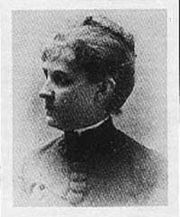
Louise Blanchard Bethune
Encyclopedia

Waterloo (town), New York
Waterloo is a town in Seneca County, New York, United States. The population was 7,866 at the 2000 census. The town, as well as its major community, are named after Waterloo, Belgium. The current Town Supervisor is James Mooney and the current Town Clerk is Louise Van Nostrand.The Town of Waterloo...
, was the first American woman
Woman
A woman , pl: women is a female human. The term woman is usually reserved for an adult, with the term girl being the usual term for a female child or adolescent...
known to have worked as a professional architect
Architect
An architect is a person trained in the planning, design and oversight of the construction of buildings. To practice architecture means to offer or render services in connection with the design and construction of a building, or group of buildings and the space within the site surrounding the...
. The Blanchard family moved to Buffalo, New York
Buffalo, New York
Buffalo is the second most populous city in the state of New York, after New York City. Located in Western New York on the eastern shores of Lake Erie and at the head of the Niagara River across from Fort Erie, Ontario, Buffalo is the seat of Erie County and the principal city of the...
when Louise was a child. She graduated from the Buffalo High School in 1874 and was planning on going to architecture school at Cornell. Instead, in 1876, she took a job working as a draftsman in the office of Richard A. Waite
Richard A. Waite
Richard A. Waite was a British-born American architect in the late 19th century.Richard Waite's father arrived in America in 1856 with his wife and children and settled in Buffalo, New York to work in a printing company. His son Richard, like many early architects, learned building design as an...
and F.W. Caulkings who were well know architects in Buffalo, New York. At the time it was more common to learn architecture while working for a firm rather than in a classroom. She worked for this company for 5 years and with this company she received a “man’s” education and proved that she could hold her own in this masculine profession. In 1881, she opened an independent office partnered with Robert Bethune in Buffalo, earning herself the tile as the nation's first professional woman architect. Two months later, she wed Robert Bethune and they had a son, Charles, in 1883.
Louise Blanchard Bethune designed mostly industrial and public buildings, she disliked working on private home projects since they were not a challenge for her and they paid very little money. She is known for designing some of Buffalo’s best hotels and schools. Sadly, a lot of her buildings have been destroyed to make room for newer, updated buildings. One of her most well known designs and her masterpiece was the neoclassical Lafayette Hotel that she was commissioned $1 million to design, completed in 1904. It had 256 rooms and was one of the top 15 finest hotels in the U.S. in its time. Her and her husband worked together to designed a music store in Buffalo that was one of the first buildings in the United States to be built using a steel frame and poured concrete slabs. Two other buildings that she designed that are still standing today are the Iroquois Door Plant Company warehouse and the large Chandler Street Complex for the Buffalo Weaving Company.
Louise Blanchard Bethune was elected a member of the Western Association of Architects in 1885, of which she later served a term as vice president. She was the first female associate of the American Institute of Architects
American Institute of Architects
The American Institute of Architects is a professional organization for architects in the United States. Headquartered in Washington, D.C., the AIA offers education, government advocacy, community redevelopment, and public outreach to support the architecture profession and improve its public image...
(A.I.A.) in 1888 and she became a fellow to the institute in 1889. In 1891 she refused to compete in a design competition for the World’s Columbian Exposition in Chicago because of the difference in how men and women were being treated. The men were paid $10,000 to design other buildings for the fair while the women only got $1,000 for their designs. She retired in 1908 and died in 1913 at the age of 57. In 1910, between the time she retired and the time she died, there were 50 women working in an architecture profession.

